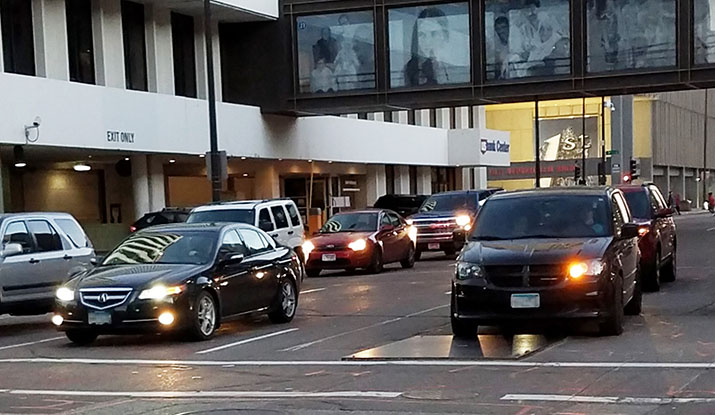Exactly when do I need to turn on my headlights?
March 25, 2021

When troopers pull motorists over for not having their lights on in inclement weather, the majority of them say they had no idea it was a law. Unfortunately, ignorance of the law is no excuse. There are three instances in which Minnesota state law requires you to have your headlights and taillights on – and only one of them is nighttime.
If that seems confusing, consider that your car's headlights serve two functions. The much more obvious of the two is to allow you to see where you're going. But the less obvious, but just as important, is so that other motorists can see you. Let's say you're driving a gray or black car on gray or black pavement during a thunderstorm. If you don't have your headlights on, you'll blend in with your surroundings – even if it's noon. That compromises your safety and the safety of other motorists.
So what exactly does the Minnesota Vehicle Lighting statute require? The three situations where you have to have your headlights and taillights on are:
Anytime between sunset and sunrise (that one's a no-brainer).
When it's raining, snowing, sleeting or hailing (here's an easy way to remember this one: If your windshield wipers are on, your lights should be, too).
Any other time when visibility is low enough that you can't see 500 feet ahead. Think fog or smoke, for example.
Keep in mind that you can't use parking lights to satisfy these requirements. They have to be your actual headlights and taillights.
Another excuse troopers commonly hear is that the motorist thought their lights were on because their car has automatic headlights. Most newer vehicle models do have automatic headlights that are activated with a photoelectric sensor. But sometimes when it's raining or snowing during the day, it doesn't get dark enough for the sensor to switch your lights on. That's why it's important to consult your owner's manual and learn how to turn your lights on manually.
Yes, Minnesota's headlight statute extends to more than just the hours between sunset and sunrise, and it's about both seeing and being seen. Ultimately, it's one more way to keep yourself and others safe on Minnesota's roads.

